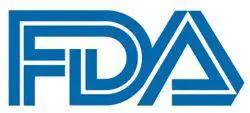BLA Resubmitted to FDA for Denileukin Diftitox in Relapsed/Refractory Cutaneous T-cell Lymphoma
The BLA seeking the approval of denileukin diftitox in patients with relapsed/refractory cutaneous T-cell lymphoma was resubmitted to the FDA.
FDA

The biologics license application (BLA) for the interleukin (IL)-2–based immunotherapy denileukin diftitox (Lymphir) in patients with relapsed or refractory cutaneous T-cell lymphoma (CTCL) following at least 1 prior line of systemic therapy has been resubmitted to the FDA.1
The resubmission follows ongoing engagement between Citius Pharmaceuticals and the regulatory agency after a complete response letter (CRL) was issued on July 28, 2023.2 The company believes it has addressed enhanced product testing and additional manufacturing controls that had been noted in the letter. No safety or efficacy issues were flagged, and no additional trials are needed, according to the CRL.
Denileukin diftitox is a recombinant fusion protein consisting of an IL-2 receptor binding domain with diphtheria toxin fragments. It specifically binds to cell surface IL-2 receptors, allowing diphtheria toxin fragments to enter cells and inhibit protein synthesis. The FDA granted orphan drug designation to the agent in CTCL and peripheral T-cell lymphoma(PTCL) in 2013 and 2011, respectively. Moreover, the agent gained regulatory approval in Japan in CTCL and PTCL in 2021.
Denileukin diftitox was evaluated in the phase 3 Study 302 trial (E777-G000-302; NCT01871727), which enrolled adult patients with relapsed or refractory stage I to IV CTCL with CD25 positivity.3 Patients needed to have an ECOG performance status of 2 or less and adequate organ function. Eligible patients also needed to have undergone at least 1 prior CTCL therapy and have not received prior denileukin diftitox.
During dose escalation, patients received denileukin diftitox at dose levels ranging from 6 to 15 μg/kg. During the main study, patients received the agent at a daily dose of 9 μg/kg for the first 5 days of every 21-day cycle.
The primary end point was objective response rate (ORR). Secondary end points included duration of response (DOR), time to response (TTR), skin response, duration of skin response, ORR using alternative criteria, safety, and tolerability. Exploratory end points included progression-free survival, time to progression, pruritus improvement, and quality of life.
In the 69 patients who comprised the primary efficacy analysis set and received the agent at 9 μg/kg, the median age was 64.0 years (range, 28-87), with 50.7% of patients younger than 65 years. Most patients were male (65.2%), White (72.5%), and had mycosis fungoides (95.7%). In terms of CTCL disease stage, 7.2% had stage IA disease, 23.2% had stage IB to IIA disease, 34.8% had stage IIB disease, 11.6% had stage IIIA disease, and 10.1% had stage IIIB disease. The median number of prior therapies received was 4. Seventeen percent of patients had received 8 or more lines of prior therapies.
The ORR by independent review committee was 36.2% (95% CI, 25.0%-48.7%) in the primary efficacy population (n = 69), which included an 8.7% complete response (CR) rate. The ORRs among patients with stage IA/IB/IIA (n = 30), IIB (n = 24), and IIIA/IIIB (n = 15) disease were 36.7% (95% CI, 19.9%-56.1%), 45.8% (95% CI, 25.6%-67.2%), and 20.0% (95% CI, 4.3%-48.1%), respectively. The respective clinical benefit rates were 60.0% (95% CI, 40.6%-77.3%), 54.2% (955 CI, 32.8%-74.4%), and 20.0% (95% CI, 4.3%-48.1%). The overall median DOR was 6.47 months and the median TTR was 1.41 months (range, 0.7-5.6).
Of 64 evaluable patients, 84.4% experienced a reduction in skin tumor burden. Moreover, 48.4% experienced a maximum reduction of at least 50% compared with baseline, and 12.5% achieved a CR. Decreases in skin burdens were observed irrespective of disease stage.
In terms of safety, treatment-emergent adverse effects (TEAEs) of any grade occurred at a rate of 98.6%. Serious TEAEs occurred in 37.7% of patients. TEAEs led to drug discontinuation for 11.6% of patients, dose reduction for 4.3% of patients, and interruption for 37.7% of patients. No fatal serious TEAEs occurred.
The most common TEAEs experienced by 15% or more of patients included nausea (any grade, 43.5%; grade ≥3, 1.4%), fatigue (31.9%; 0%), increased alanine aminotransferase (27.5%; 8.7%), chills (27.5%; 1.4%), peripheral edema (27.5%; 1.4%), increased aspartate aminotransferase (26.1%; 4.3%), infusion-related reaction (24.6%; 5.8%), headache (23.2%; 0%), diarrhea (18.8%; 0%), pruritus (18.8%; 5.8%), capillary leak syndrome (17.4%; 5.8%), pyrexia (15.9%; 1.4%), hypoalbuminemia (14.5%; 0%), reduced appetite (13.0%; 1.4%), and constipation (11.6%; 0%).
Based on Center for Drug Evaluation and Research timelines, the acceptance of the completed resubmission package for the BLA of denileukin diftitox in relapsed/refractory CTCL and issuance of a Prescription Drug User Fee Act by the FDA is expected within 30 days of the resubmission.1
References
- Citius Pharmaceuticals resubmits the biologics license application of Lymphir™ (denileukin diftitox) for the treatment of adults with relapsed or refractory cutaneous T-cell lymphoma. News release. Citius Pharmaceuticals, Inc. February 14, 2024. Accessed February 14, 2024. https://citiuspharma.com/investors/news-media/news/release-details/2024/Citius-Pharmaceuticals-Resubmits-the-Biologics-License-Application-of-LYMPHIR-Denileukin-Diftitox-for-the-Treatment-of-Adults-with-Relapsed-or-Refractory-Cutaneous-T-Cell-Lymphoma/default.aspx
- Citius Pharmaceuticals, Inc. receives a complete response letter from the US Food and Drug Administration (FDA) for Lymphir (denileukin diftitox) for the treatment of patients with relapsed or refractory cutaneous T-cell lymphoma. News release. Citius Pharmaceuticals, Inc. July 29, 2023. Accessed February 14, 2024. https://citiuspharma.com/investors/news-media/news/release-details/2023/Citius-Pharmaceuticals-Inc.-Receives-a-Complete-Response-Letter-from-the-U.S.-Food-and-Drug-Administration-FDA-for-LYMPHIR-Denileukin-Diftitox-for-the-Treatment-of-Patients-with-Relapsed-or-Refractory-Cutaneous-T-Cell-Lymphoma/default.aspx
- Foss FM, Kim YH, Prince HMM, et al. Efficacy and safety of E7777 (improved purity denileukin diftitox [Ontak]) in patients with relapsed or refractory cutaneous T-cell lymphoma: results from pivotal study 302. Blood. 2022;140(suppl 1):1491-1492. doi:10.1182/blood-2022-166916



